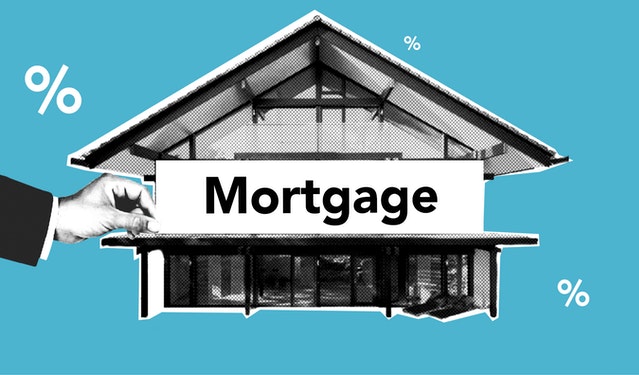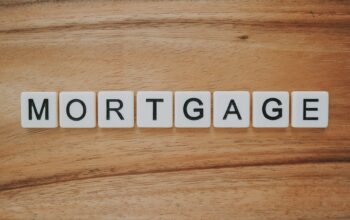There are several types of mortgages available to homebuyers. Conventional mortgage in California or any other type of mortgage has its benefits and drawbacks, so it’s essential to understand the different options before you decide which one is right for you.
Let’s take a look at Mortgage Basics 101: how mortgages work, the types of mortgages you might qualify for, and how to apply for a mortgage.
How Does a Mortgage Work?
A mortgage is a loan that is used to purchase a home. The borrower agrees to pay back the loan, plus interest, over a set period of time.
The most common type of mortgage is a 30-year fixed-rate mortgage. This means that the interest rate will stay the same for the entire term of the loan, which is 30 years. The monthly payments will also stay the same, so you’ll know exactly how much you need to budget for each month.
When you get a mortgage, you pay a down payment. This is the money that you put towards the purchase of your home. The size of your down payment will affect the type of mortgage you qualify for.
What Are the Types of Mortgages?
When we talk about “types” of mortgages, we are talking about two things: the term and the type of interest rate. A mortgage can be for any term, technically, but the most common are 30-year and 15-year mortgages. A mortgage can also be fixed-rate or adjustable-rate.
A fixed-rate mortgage means that the interest rate will stay the same for the term of the loan. An adjustable-rate mortgage (ARM) means that the interest rate will change at some point during the loan.
The most common type of mortgage is a 30-year fixed-rate mortgage with a fixed interest rate. This means that your monthly payments will stay the same for the entire term of the loan, and you’ll know exactly how much you need to budget each month.
A 15-year mortgage is another popular option. With a 15-year mortgage, you’ll have a lower interest rate, and you’ll pay off your home faster. The trade-off is that your monthly payments will be higher than they would be with a 30-year mortgage.
Other “types” of mortgages are conventional, FHA, and VA.
A conventional mortgage is a loan that is not guaranteed or insured by the government. An FHA loan is a mortgage that is insured by the Federal Housing Administration. A VA loan is a mortgage that is guaranteed by the Department of Veterans Affairs. They all have different requirements.
DSCR mortgage loans, also known as debt service coverage ratio loans, are a popular financing option for commercial real estate investors, allowing them to secure funding based on the property’s cash flow. DSCR lenders carefully evaluate the borrower’s income and expenses to ensure that the property generates sufficient income to cover the mortgage payments and meet their specific DSCR criteria.
How Early Can You Lock in a Mortgage Rate?
The interest rate on your mortgage is important, but it’s not the only factor to consider when you’re shopping for a loan. Still, you should try to lock in a mortgage rate as early as possible. When you lock a rate in, you are guaranteed that rate.
Generally, you can lock in a mortgage rate once you have an offer accepted on a property. If the closing goes late, you may need to renew the lock-in (and there may be a fee associated).
How to Apply for a Mortgage
The process of applying for a mortgage can vary from one lender to the next. However, there are some general steps that you can expect to go through when you apply for a mortgage.
The first step is to get pre-approved for a loan. This means that you will need to provide some basic information about your financial situation, such as your income, debts, and assets. The lender will then give you a pre-approval letter that says how much money you qualify for.
The next step is to find a property. Once you find a property that you want to purchase, you will need to make an offer. If the offer is accepted, then you can begin the process of applying for a mortgage.
The mortgage application process will require you to provide some additional financial information, such as tax returns and bank statements. The lender will also do a credit check. Once the lender has all the information they need, they will issue a loan commitment letter.
You may not receive a commitment until a few days before your mortgage actually closes. While this is certainly stressful, it’s normal. Today, bankers want to make sure that you don’t lose your job five days before signing your mortgage paperwork or sign up for a credit card a week prior to purchase furniture.
If you have a less-than-perfect credit history, it’s worth exploring mortgages for bad credit, as some lenders offer specialized options to help you secure a mortgage even with credit challenges.
While there are more steps (appraisal, home insurance, home inspection), they will mostly be scheduled and handled for you between your real estate agent and your loan officer. But because mortgages are so incredibly complex, it’s critical that you work with someone who understands the mortgage industry and what the experience is like for first-time buyers. This is particularly true if you are buying property abroad, and you are advised to consult a specialist such as Simon Conn’s Investment Solutions to help you understand any local procedures that might differ from your own.
Getting Help as a First-Time Buyer
This should be an exciting experience, not a frightening one. Working with the right financial agent will help you get through the mortgage experience without worrying that you’re making any mistakes.
As a first-time buyer, you need a financial professional who will educate you on what certain things mean — and not assume that you understand everything about getting a mortgage. A mortgage is a complex financial instrument, as you will swiftly discover when you sign hundreds of pages at your closing!
Related Posts












